The right aluminum can elevate your construction to new heights, ensuring durability, minimizing maintenance, and ultimately, enhancing the value of your investment. But the wrong choice can lead to costly repairs, unforeseen delays, and compromise the structural integrity of your building.
That’s where Cozydoor comes in. We understand the intricate world of aluminum, and we’re dedicated to empowering you with the knowledge to make informed decisions. This comprehensive guide will help you navigate the world of aluminum types and choose the perfect material for your specific needs.
Get ready to unlock the potential of aluminum and discover the advantages that await your construction projects.
What are the Different Types of Aluminum?
Aluminum, a lightweight and versatile metal, has revolutionized the construction industry. But did you know there’s more to aluminum than meets the eye? The world of aluminum is a complex one, encompassing a vast array of types and grades, each designed for specific applications.
Introduction to Aluminum Alloys
Aluminum in its purest form is quite soft and not suitable for most structural applications. This is where aluminum alloys come in. By strategically blending aluminum with other elements like magnesium, copper, silicon, and manganese, manufacturers create aluminum alloys with unique properties that can be tailored to specific needs.
These alloys can be classified into different “series” based on their primary alloying element, offering a spectrum of benefits:
- 1000 Series: Composed of almost pure aluminum, these alloys are highly malleable and ductile, offering excellent corrosion resistance.
- 2000 Series: Containing copper as the primary alloying element, these alloys boast impressive strength and heat treatability, often used in aircraft and aerospace applications.
- 3000 Series: Featuring manganese as the key element, these alloys offer a balance of strength, corrosion resistance, and weldability, commonly used in food and beverage containers.
- 4000 Series: Silicon is the prominent element in this series, known for their excellent casting properties, making them suitable for complex shapes.
- 5000 Series: Magnesium is the main component, providing these alloys with good strength-to-weight ratio and corrosion resistance, often found in marine and industrial applications.
- 6000 Series: Featuring magnesium and silicon, these alloys offer a balance of strength, weldability, and machinability, making them popular for structural applications.
- 7000 Series: Zinc is the primary alloying element, yielding exceptionally high strength and good fatigue resistance, often used in aerospace and high-performance applications.
Wrought Aluminum
Wrought aluminum is created through processes like rolling, extruding, and forging, allowing for the creation of various shapes and profiles. This versatility makes it ideal for a multitude of construction applications.
- Common Wrought Alloys:
- 6061: A highly versatile alloy known for its strength, weldability, and machinability, making it a go-to choice for structural applications.
- 7075: Renowned for its exceptional strength and toughness, often used in aircraft and aerospace components where high performance is critical.
- 3003: Boasting good formability and corrosion resistance, it’s ideal for applications like architectural panels, signage, and food and beverage containers.
Cast Aluminum
Cast aluminum is poured into molds to create complex shapes, making it suitable for intricate designs.
- Common Cast Alloys:
- 356: Known for its good castability, strength, and corrosion resistance, it’s often used in automotive parts, structural components, and machinery.
- 319: Offering excellent fluidity and strength, it’s popular for applications where intricate details and fine finishes are required.
Aluminum Grades and Tempers
Within each aluminum alloy series, there are various “grades” and “tempers,” which further define the specific properties of the material.
- Grades refer to the chemical composition of the alloy.
- Tempers indicate the mechanical treatment and heat treatment applied to the alloy, influencing its strength, hardness, and ductility.
Understanding these grades and tempers is crucial for selecting the right aluminum that meets the precise requirements of your project. For example, a 6061-T6 aluminum alloy has a higher yield strength than a 6061-T4 alloy, making it better suited for structural applications requiring high load-bearing capacity.
The Cozydoor Advantage:
We’re dedicated to providing you with a comprehensive understanding of aluminum types, ensuring you can make informed decisions for your projects. Our team of experts can provide you with detailed guidance on selecting the ideal aluminum alloy for your specific requirements, ensuring your project meets the highest standards of quality, durability, and safety.
Comparing Aluminum Alloys: Properties and Selection
Now that we’ve explored the different types of aluminum, let’s delve into the specific properties that make each alloy unique.
Strength and Durability
Aluminum alloys are renowned for their strength-to-weight ratio, offering a remarkable combination of lightness and robustness. For applications where high load-bearing capacity is paramount, like structural components, you’ll want to consider alloys known for their high strength, such as:
- 7075 (Wrought): Boasting exceptional strength, this alloy is often found in aircraft and aerospace applications, where every gram of weight matters.
- 2024 (Wrought): Offering a good balance of strength, weldability, and toughness, it’s ideal for structural applications where high performance is required.
Corrosion Resistance
Aluminum is naturally resistant to corrosion, thanks to a protective oxide layer that forms on its surface. However, the level of corrosion resistance varies among different alloys.
- 1100 (Wrought): Renowned for its excellent corrosion resistance, this alloy is ideal for applications where exposure to harsh environments is a concern, such as marine structures and food and beverage containers.
- 3003 (Wrought): Offering good corrosion resistance, it’s often used in exterior architectural applications and signage.
Machinability and Weldability
Aluminum alloys can be machined and welded, but the ease of these processes varies depending on the alloy’s composition.
- 6061 (Wrought): Known for its excellent machinability and weldability, making it a versatile choice for a variety of applications.
- 5052 (Wrought): Offering good weldability, it’s often used in marine applications where corrosion resistance is critical.
Choosing the Right Aluminum
Selecting the appropriate aluminum alloy is a crucial step in ensuring the success of your project. Cozydoor provides personalized consultations to help you choose the ideal aluminum type, considering your specific project needs:
- Functionality: What are the specific functions of the aluminum components? Are they structural, decorative, or serving a specific purpose?
- Load-bearing capacity: How much weight will the aluminum components be required to support?
- Environment: Will the aluminum be exposed to harsh weather conditions, chemicals, or other corrosive elements?
- Design: Are there specific aesthetics or design requirements?
- Budget: What’s your budget for the aluminum materials?
By carefully evaluating these factors, we’ll guide you towards the optimal aluminum alloy for your project, ensuring the right balance of performance, durability, and cost-effectiveness.
Cozydoor’s Expertise:
We’re not just providing you with information; we’re providing you with solutions. Our team of aluminum experts can provide personalized recommendations tailored to your specific project requirements. Let us guide you through the intricacies of aluminum selection, ensuring you have the confidence to make the right decision.
Read more Blog & New:
The Impact of Composition and Heat Treatment on Aluminum
The properties of aluminum alloys are not solely determined by their base composition. The addition of specific alloying elements and the application of heat treatment play a crucial role in shaping the final characteristics of the metal.
Chemical Composition
The addition of alloying elements to aluminum creates a synergistic effect, enhancing its properties.
- Magnesium: Increases strength and weldability, often used in structural applications.
- Copper: Improves strength and heat treatability, making it suitable for aerospace and high-performance applications.
- Silicon: Enhances castability and provides good corrosion resistance.
- Manganese: Offers good strength and weldability, often used in structural applications.
The precise combination and percentage of alloying elements determines the alloy’s unique properties.
Heat Treatment
Heat treatment processes involve carefully controlled heating and cooling cycles, altering the microstructure of the aluminum alloy and influencing its strength, hardness, and ductility.
- Solution Heat Treatment: Involves heating the alloy to a specific temperature, followed by rapid cooling, creating a homogenous solid solution and increasing ductility.
- Precipitation Heat Treatment: Involves further aging the alloy at a lower temperature, forming fine precipitates that increase strength and hardness.
- Artificial Aging: A process of holding the alloy at a specific temperature for a predetermined time, further increasing strength and hardness.
Understanding the effects of heat treatment is essential for selecting the correct aluminum for your project, as it can significantly influence the material’s overall performance.
Cozydoor’s Commitment to Quality:
We understand the importance of quality in construction projects. Cozydoor’s aluminum products undergo rigorous testing and quality control measures to ensure they meet the highest standards of performance and durability, exceeding your expectations. We’re dedicated to providing you with the assurance that your construction projects are built with materials that will stand the test of time.
Aluminum Manufacturing Processes and their Influence on Final Products
The process by which aluminum is manufactured significantly impacts the final product’s properties and applications.
Overview of different manufacturing processes: Rolling, Extrusion, Casting, Forging
- Rolling: Aluminum is passed between rollers to reduce its thickness, creating flat sheets, plates, or foils.
- Extrusion: Molten aluminum is forced through a die, producing profiles with specific shapes, such as beams, tubes, and channels.
- Casting: Molten aluminum is poured into molds to create complex shapes, allowing for intricate designs.
- Forging: Aluminum is shaped by hammering or pressing, creating strong and durable parts with improved strength and toughness.
How manufacturing processes affect the properties and applications of aluminum products
The manufacturing process influences the aluminum’s grain structure, strength, ductility, and overall properties.
- Rolled aluminum: Offers good formability, ductility, and flatness, suitable for applications like sheets, plates, and foils.
- Extruded aluminum: Provides high strength and complex shapes, ideal for applications like beams, tubes, and architectural profiles.
- Cast aluminum: Allows for intricate designs and good dimensional accuracy, used in automotive components, structural elements, and decorative parts.
- Forged aluminum: Offers improved strength and toughness, ideal for high-stress applications like aerospace components and automotive parts.
Cozydoor’s Commitment to Innovation:
We stay at the forefront of aluminum manufacturing technology, utilizing cutting-edge processes to create high-quality, durable, and aesthetically pleasing products that meet your specific project requirements. We continuously invest in research and development to ensure we’re providing you with the best possible aluminum solutions.
Sustainability and the Future of Aluminum
Aluminum is a sustainable metal, highly recyclable, and essential for a circular economy.
Recycling Aluminum
Recycling aluminum is a highly efficient process, requiring significantly less energy compared to primary aluminum production.
- Cozydoor’s commitment to sustainability: We actively incorporate recycled aluminum into our manufacturing processes, reducing our environmental impact and promoting a sustainable future.
- The benefits of recycled aluminum: It’s not just good for the environment; it’s also cost-effective, providing a sustainable and economic advantage for your construction projects.
Emerging Aluminum Technologies
The aluminum industry is constantly evolving, with advancements in technology leading to innovative applications.
- Aluminum alloys with enhanced properties: Research is ongoing to develop new alloys with superior strength, corrosion resistance, and other properties.
- Advanced manufacturing processes: New techniques like additive manufacturing (3D printing) are opening up possibilities for creating complex aluminum structures with enhanced design flexibility and reduced waste.
- Aluminum in green building: The use of aluminum in green building practices is growing rapidly, as its lightweight, durable, and recyclable properties make it a preferred material for sustainable construction.
By understanding the various types of aluminum, their properties, and how they can be applied effectively in industrial construction projects, you can make informed decisions that optimize costs while ensuring safety and durability. For personalized consultations or to explore competitive pricing options tailored to your project needs, fill out your contact information with Cozydoor today!

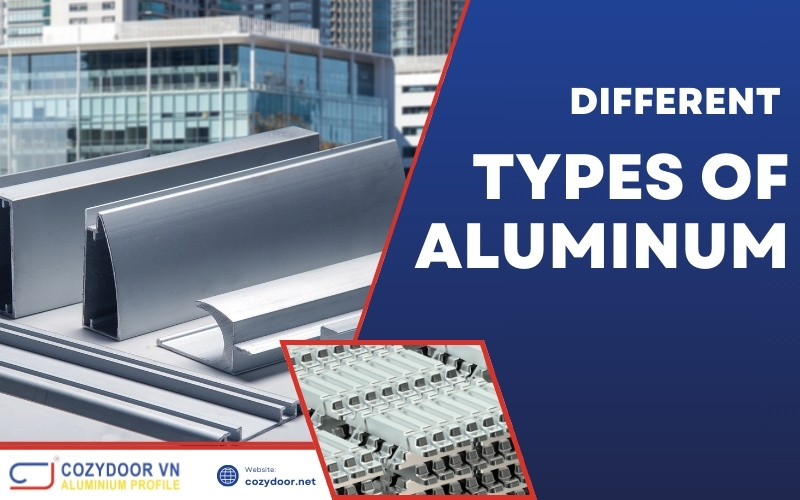
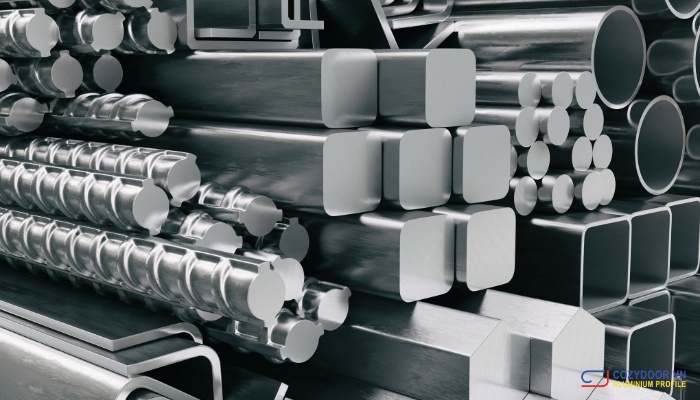
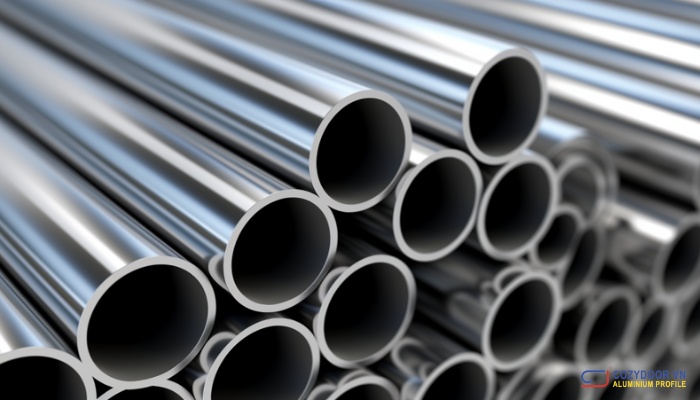
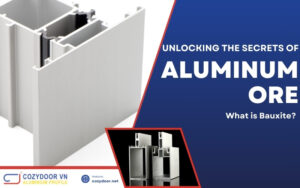
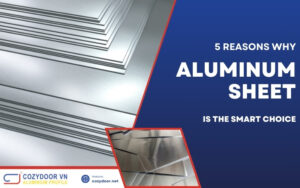
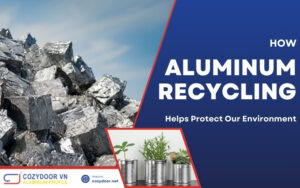
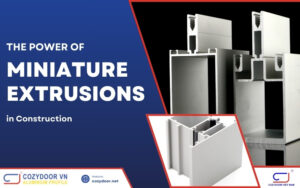
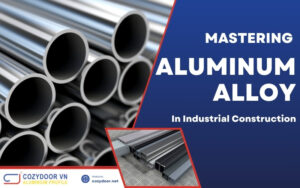
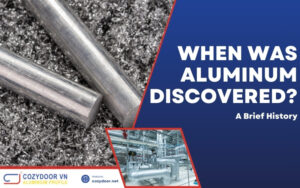
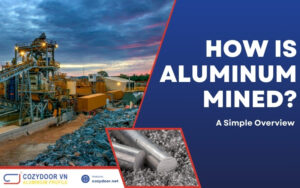
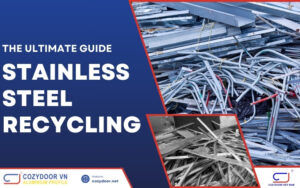
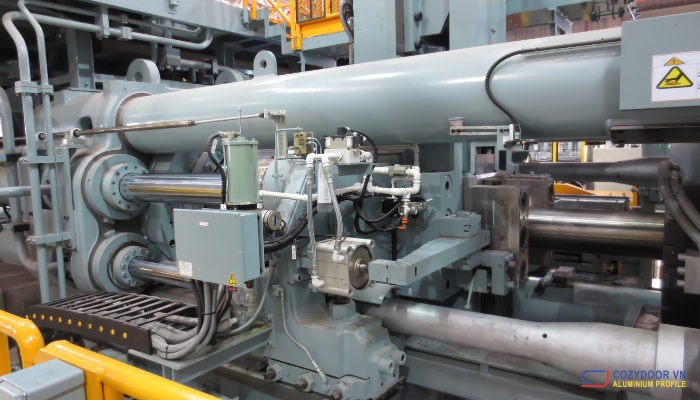
Discover the Different Aluminum Types You Need to Know
Are you tired of the same old materials? Ready to [...]
Nov
Discover the Different Types of Aluminum and Their Uses
The right aluminum can elevate your construction to new heights, [...]
Nov
Is Aluminum a Metal? Unlocking its Potential for Modern Construction
Aluminum’s remarkable properties have revolutionized industries, and its impact on [...]
Nov
Custom Aluminum Extrusions: Perfect Fit for Your Design Needs
Tired of the same old, cookie-cutter solutions for your industrial [...]
Nov
A380 Aluminum Properties: 5 Ways to Slash Costs & Boost Project Timelines
Cozydoor recognizes the demands of your industry and is committed [...]
Nov
Is Aluminum Conductive? 7 Ways it Powers Up Industrial Construction Projects.
In the fast-paced world of industrial construction, project managers and [...]
Nov
6061-T4 vs T6: Choosing the Best Aluminum for Your Project
Ready to elevate your next industrial construction project? Choosing the [...]
Nov
Understanding the Environmental Impact of Aluminum Production
As a director or project manager in industrial construction, you’re [...]
Nov